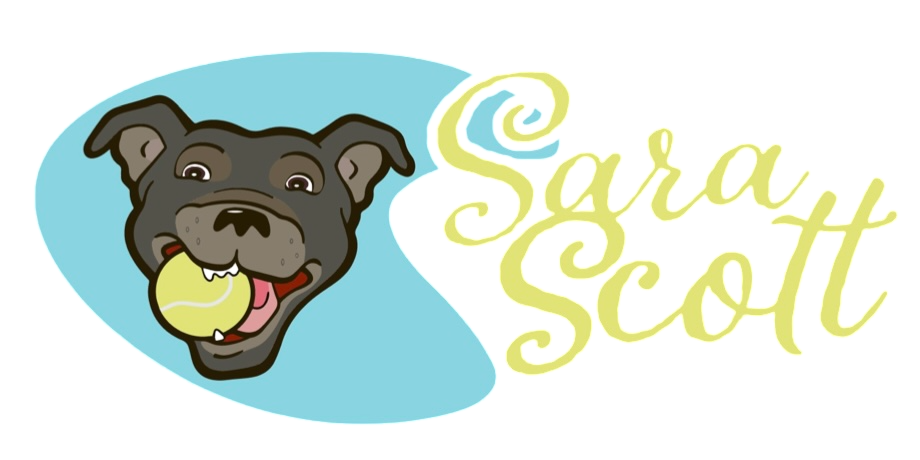Dog Bites 101 - What You Need to Know
- Sara Scott

- Dec 18, 2023
- 4 min read
As a dog owner, few things are scarier than your pup biting someone. While extremely stressful in the moment, there are constructive steps to take in the aftermath. Acting with care, objectivity and forethought paves the path to prevention down the road.

Initial Incident Response
Should your dog bite a person, beginning with a reasoned real-time reaction is essential:
Remain calm and remove your dog from the situation as safely as possible. Yelling or otherwise responding intensely can further agitate them.
Secure your dog somewhere away from others, such as a crate, room or car where they can settle.
Do not punish the dog following a bite, even though it’s upsetting. Punishment is ineffective after the fact and can worsen future behavior.
Tend to the injury and help the victim secure medical care if needed. Provide first aid supplies if available.
Exchange contact information with the victim, and take photos of any wounds if appropriate.
Make genuine apologies and commit to following up once the dust settles.
Objective Incident Review
In the hours following a bite, emotions run high for all involved. After ensuring safety and providing any immediate support to the victim, invest time into a reasoned retrospective:
What circumstances or triggers preceded the bite? Were there signs of anxiety or arousal?
Analyze the scenario step-by-step. When did the bite occur and how did it escalate?
What motivations potentially influenced your dog’s reaction? Fear? Guarding behavior? Frustration?
What training gaps exist? A dog that bites likely has underlying behavior issues in need of improvement.
Making an assessment of contributing factors provides direction on areas requiring work. Further input from a certified behavior consultant can also prove invaluable.
Understanding Bite Level Classifications
Not all bites bear the same severity, prognosis or required response. Dr. Ian Dunbar developed a bite scale assessing wound pathology on a 1 to 6 level. This bite scale objectively gauges the scenario based on damage inflicted.
Level 1: Snaps or lunging, no skin contact.
Level 2: Light surface pinch that does not break skin. May leave slight bruise due to forward momentum.
Level 3: Punctures skin but does not tear flesh or require stitches. Minor bruising.
Level 4: Two to four holes from punctures penetrating deeper underlying tissue. No tearing.
Level 5: Multiple bites showing slashing rather than poking damage. Significant tissue loss. Major injury.
Level 6: Fatality due to attack or bites.
While no biting merits dismissal, Levels 1 and 2 indicate a dog lacking training but with a positive long-term outlook. However, Levels 5 and 6 denote highly dangerous dog behavior.
Understanding where a specific bite ranks provides critical context on likelihood of desired outcomes and steps to help prevent future occurrences.
Constructive Ways to Manage Dogs Prone to Biting
If biting has occurred before, actively managing the dog’s environment helps prevent encores. However, restrictions should minimize triggers reasonably without compromising quality of life long-term. Useful tactics include:
Prevent Unsupervised Interactions: Dogs with bite histories should not mingle freely with unfamiliar people. Create a safe room for the dog when guests visit.
Use Baby Gates and Closed Doors: Restrict wandering into high-risk areas. Gates/doors also quickly separate dogs from visitors or delivery people.
Introduce Muzzle Training: Basket style muzzles avoid bites during unavoidable close interactions, without preventing panting and treats. Take time conditioning dogs to find wearing muzzles rewarding.
Avoid Triggers: Steering clear of specific environments, people or stimuli prone to trigger reactivity prevents rehearsal of biting.
Increase Overall Enrichment: Boosting daily mental and physical exercise, proper diet, rest and predictability helps lower baseline stressors contributing to undesirable behaviors.
While biting poses dangers if unchecked, compassionate and informed management can help dogs overcome difficulties and thrive within loving homes. Patience and wisdom pave the path to peaceful coexistence.
Seeking Outside Guidance on Biting
Despite best efforts, biting requires specialized behavior expertise beyond what an owner can offer independently. Seeking customized guidance stands among the most caring actions in committing to keep dogs and community members safe.
Working collaboratively with skilled professionals well-equipped to address root causes of biting breeds sustainable change. Just as veterinarians, pediatricians and teachers fill critical roles caring for those we love, dog behavior experts provide an equivalent invaluable service for our dogs.
The Way Forward After a Bite
In the upsetting wake of your pup biting someone, maintaining perspective proves vital. With understanding, informed action and obtaining professional help, dogs can overcome hurdles undermining their conduct. Some final tips if ever facing this scenario:
Extend sincere condolences to bite victims. Follow up expressing willingness to cover related medical expenses.
Commit fully to identifying and addressing behavior gaps constructively.
Reflect honestly on whether your lifestyle can meet the dog’s needs, and how to enrich quality of life. Their wellbeing hangs in the balance.
Develop a customized, compassionate plan balancing management and training. Help exists - you needn't forge the path alone.
Know that bites don’t inherently make dogs “lost causes”. Many who bite ultimately thrive via transformation of behavior and relationships.
While the gravity after dogs bite makes struggling to cope understandably, level-headed, caring responses lay the architecture for brighter days ahead. This too shall pass.
If your dog recently bit someone, I know how distressing and complex the path forward can be. As a certified dog trainer and behavior consultant, I have successfully helped numerous clients whose dogs displayed biting and aggression. Please click here to tell me more. I can provide customized guidance so you and your pup can overcome this hurdle together.




Comments